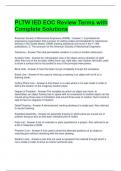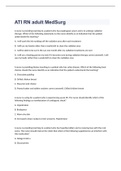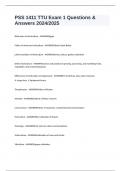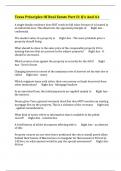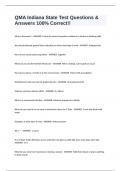Exam (elaborations)
PLTW IED EOC Review Terms with Complete Solutions
- Course
- Institution
PLTW IED EOC Review Terms with Complete Solutions American Society of Mechanical Engineers (ASME) - Answer-1. A professional engineering organization that is known for setting codes and standards for mechanical devices in the United States. ASME drawing standards are found in the Y-14M publication...
[Show more]
